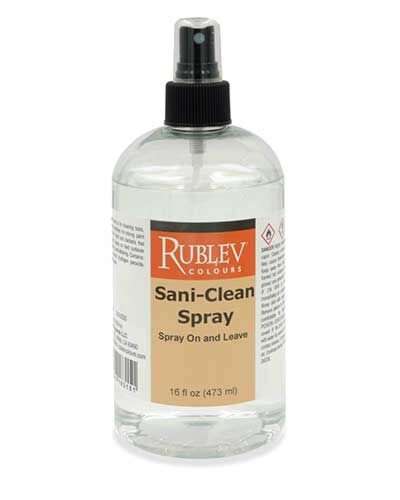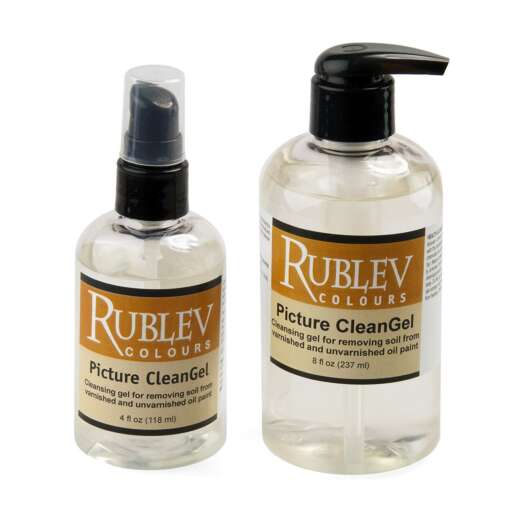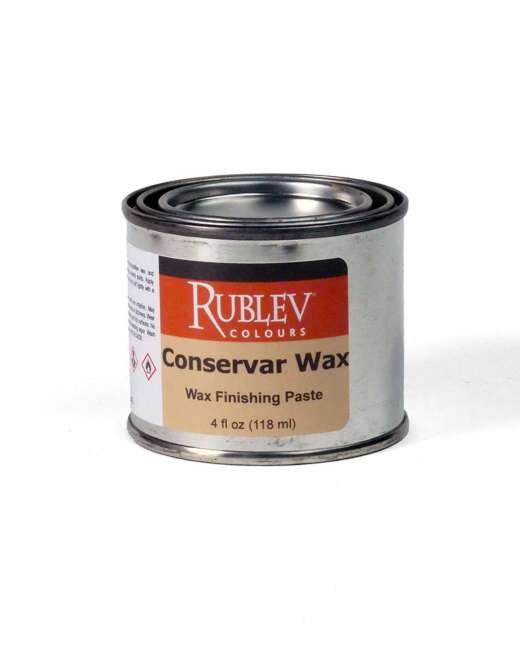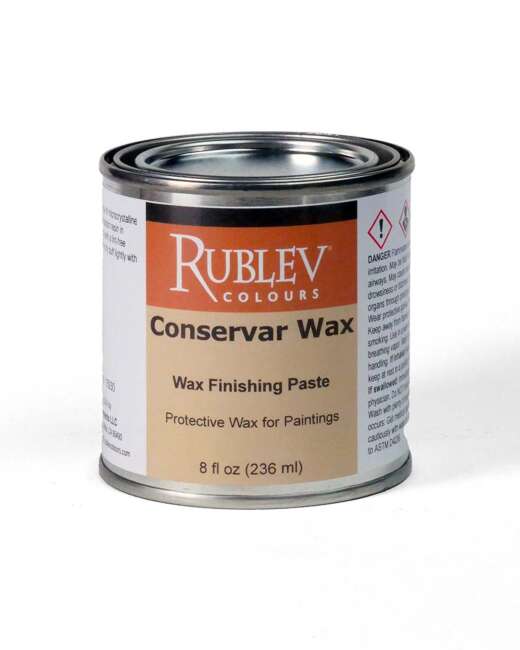Best Practices for Cleaning Paintings

Over time, the appearance of paintings changes not only because of accumulated dirt but also because aging alters the materials that comprise paintings. Besides the build-up of dust, dirt, and grime (e.g., soot, nicotine, etc.), the gradual yellowing and cracking of the varnish layer alters the image. Removing dirt and other obscuring material requires great skill because any painting surface changes may bring irreversible and damaging results.
This is the first part of four on cleaning paintings: Dusting, Dry Cleaning, and Aqueous Cleaning are described in the following three articles.
What is Cleaning?
Cleaning is an irreversible treatment and one that demands careful consideration. Permanent damage may easily result from even the most cautious attempts to clean a painting. Cleaning and varnish removal requires understanding the materials in each layer of a painting’s structure.
This article provides artists with practical and safer methods to clean their paintings than currently taught or practiced by artists. The motivation behind this article came from witnessing artists clean their paintings with commercial cleaners, solvents, and oil mixtures demonstrated on YouTube and anecdotal advice from well-meaning artists. The cleaning methods demonstrated in this article apply specifically to oil paintings, but the techniques and materials can also be used with additional precautions on gouache and tempera paintings.
No one without formal training in painting conservation should attempt to clean a painting other than their own or if there is any doubt about its condition. The effects of various cleaning agents on a particular painting require a thorough understanding of the materials in each layer and extensive practical conservation experience. |
Is the Cleaning of Paintings Complicated?
The practice of cleaning is constantly being improved upon. Caution is advised when searching the literature for cleaning instructions because it often contains outdated or inaccurate information, such as recipes for cleaning or removing varnish layers, which will also remove paint layers.
In 1921, Max Doerner warned about the damage to paintings that could be caused by cleaning: “One cannot believe all the possible types of materials which are applied to paintings! The strongest caustics, acids, and solvents are used without a second thought. Solutions with unknown composition, so-called secret solutions, are recommended to the public, as something anybody without any knowledge can use to clean pictures. Such “cleaning” methods are often too successful, right down to the ground layers.” (Doerner 1921)
Even today, artists use caustics, acids, soaps, solvents, and oils to clean their paintings. Every ingredient from the kitchen is used: bread, onions, garlic, and much more. Instructions for cleaning pictures can be found on the Internet and demonstrated by “picture restorers” on YouTube. Rubbing a painting with half of a potato is often suggested. Mixtures of solvents and oil are frequently demonstrated.
The use of balsams for cleaning paintings, particularly copaiba balsam, was fashionable until the end of the nineteenth century. The effect of this balsam was devastating, especially on oil paintings. A paint layer treated with copaiba balsam is much more sensitive and subject to damage than before cleaning. Some commercial solutions, such as Winsor and Newton Artists’ Picture Cleaner, still contain copaiba balsam.
The interaction of water and solvents with a painting must be understood and carefully considered. Often, damage from improper cleaning may not be immediately apparent. For example, improper cleaning may weaken the adhesion of the ground layer to the support, resulting in flaking paint immediately or later. Excess water used in cleaning may change the dimension of the fabric layer due to swelling and shrinking of the fibers. This fiber movement can put unnecessary tension on the paint layer and cause it to flake off. Water might wash out water-sensitive additives in paint and colorants resulting in embrittled and faded films.
Paintings should not be cleaned with oil of any kind, commercial cleaning preparations, soap, water, erasers, bread crumbs, raw potatoes, or household cleaners. Neglect is less dangerous than inexpert treatment. If there is any doubt about the condition of a painting or if it is damaged, it should be left untouched until a conservator can examine it.
When Cleaning, Storing, and Displaying Paintings... Don’t:
• Use wet or impregnated cloths, stiff bristle brushes, or feather dusters for dusting paintings, as the surfaces of paintings are delicate and can be irreversibly damaged. Threads from dust cloths may catch areas of raised paint, moisture may cause subsequent loss of paint, and bristle-haired brushes and feather dusters can scratch the surface of a painting.
• Apply any domestic or proprietary cleaning materials to the surface of paintings, as this may result in permanent damage.
• Handle unframed paintings with bare hands—use cotton, vinyl, or smooth leather gloves and keep any contact with the paint surface to a minimum.
• Allow packing or storage materials to touch the surface of paintings as this may pose a severe risk to the surface of the painting, especially newly painted surfaces.
• Display or store paintings in rooms with high dust levels unless they have been protected by picture varnish or wrapped in polyethylene plastic (during storage).
• Display or store paintings in locations vulnerable to damage; this includes entrances, lobbies, or near open doors or windows.
Next: Dusting Paintings
Selected Bibliography
Carlyle, Leslie, Joyce Townsend, and S. Hackney. (1990) “An Investigation into Its Application for Surface Cleaning.” In Dirt and Pictures Separated, editor, V. Todd, pp. 44–48. London: United Kingdom Institute for Conservation.
Doerner, Max (1921) Malmaterial und seine Verwendung im Bilde. [The Materials of an Artist and Their Use in Painting.] Reprint of 1938 6th edition, Stuttgart, Germany: Thomas Hoppe, 1993.
Gottsegen, Mark David, The Painter’s Handbook, New York, NY: Watson-Guptill Publications, 1993.
Keck, Caroline K., A Handbook on the Care of Paintings, The American Association for State and Local History, 1965.
Keck, Caroline K., How to Take Care of Your Pictures, The Museum of Modern Art and The Brooklyn Museum, 1954.
Keck, Sheldon, The Care of Paintings, Brooklyn Museum Bulletin, Vol. X, No. 3, The Brooklyn Museum, 1953.
Keck, Sheldon (1984) “Some Picture Cleaning Controversies Past and Present”. Journal of the American Institute for Conservation, 23(2):73–87. http://cool.conservation-us.org/jaic/articles/jaic23-02-001.html.
Laudenbacher, Konrad. “Considerations of the Cleaning of Paintings”. Smithsonian Museum Conservation Institute website: https://repository.si.edu/bitstream/handle/10088/20480/02.Laudenbacher.SCMC3.Mecklenburg.Web.pdf.
Shelley, Marjorie, The Care and Handling of Art Objects: Practices in the Metropolitan Museum of Art, Metropolitan Museum of Art, 1987.
Stout, George L., The Care of Pictures, New York, NY: Columbia University Press, 1948.
Thomson, Garry, The Museum Environment, 2nd edition, Boston, MA: Butterworths, 1986.












